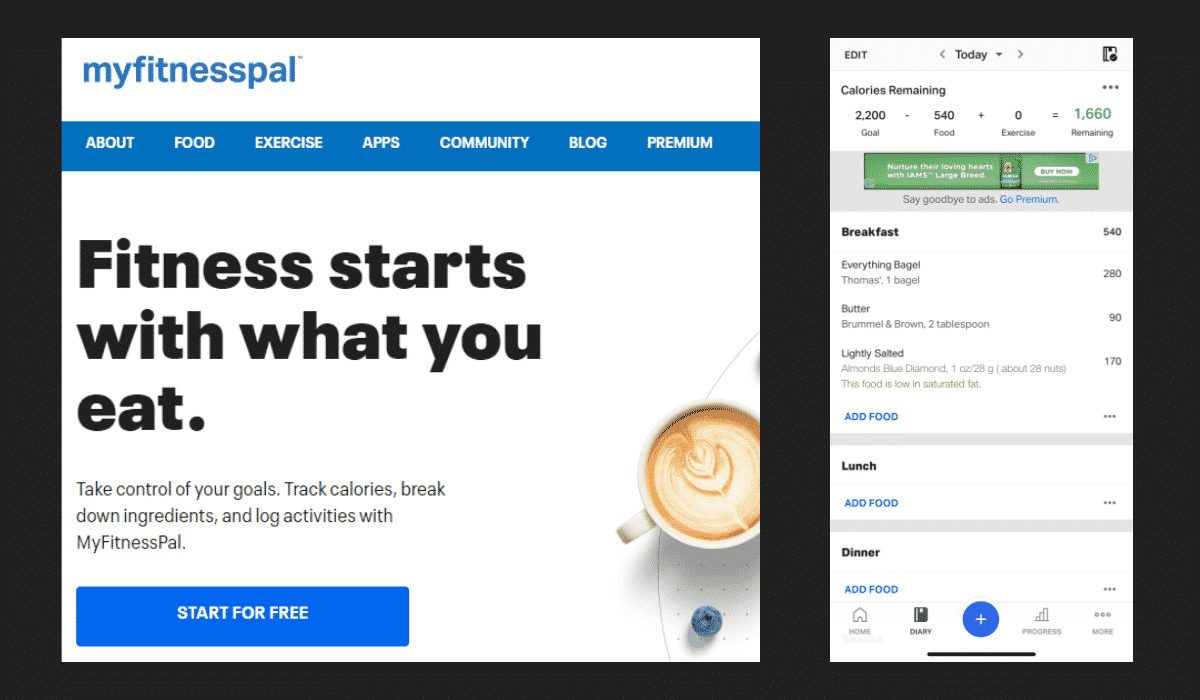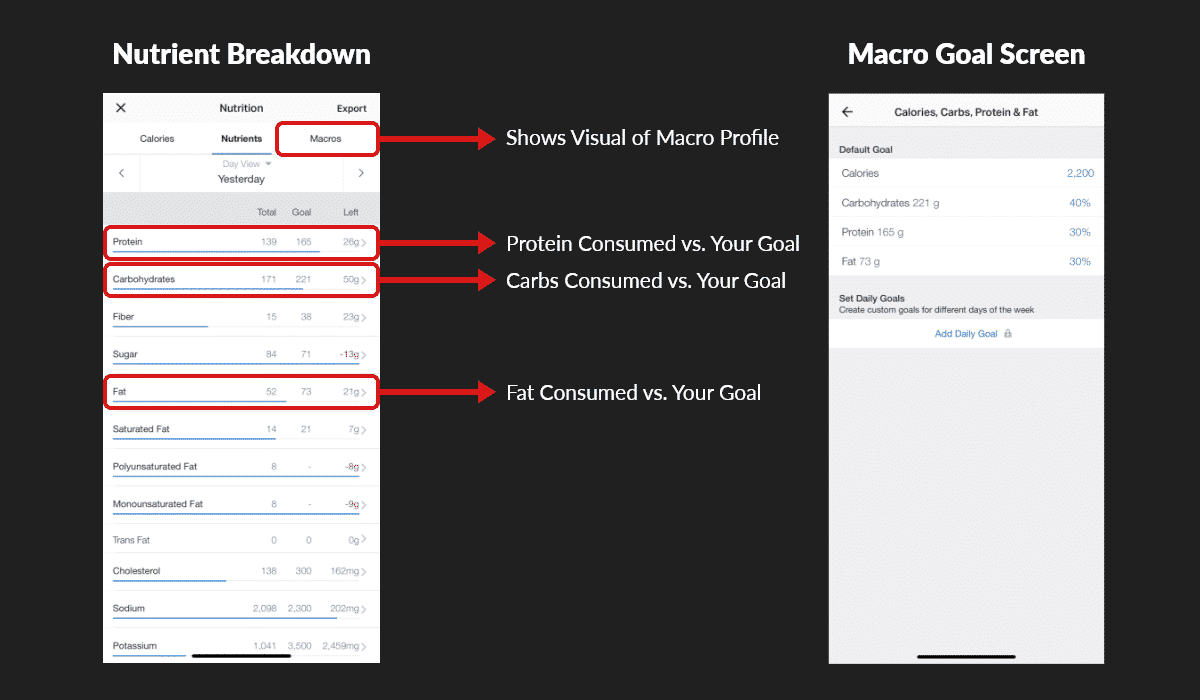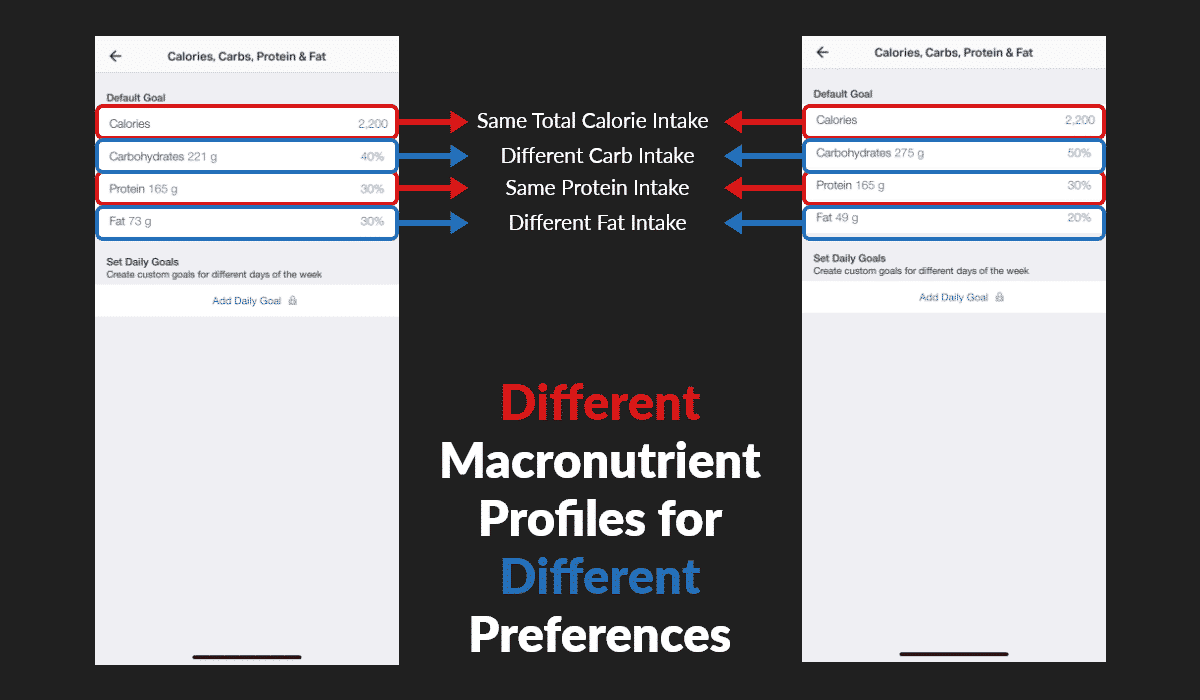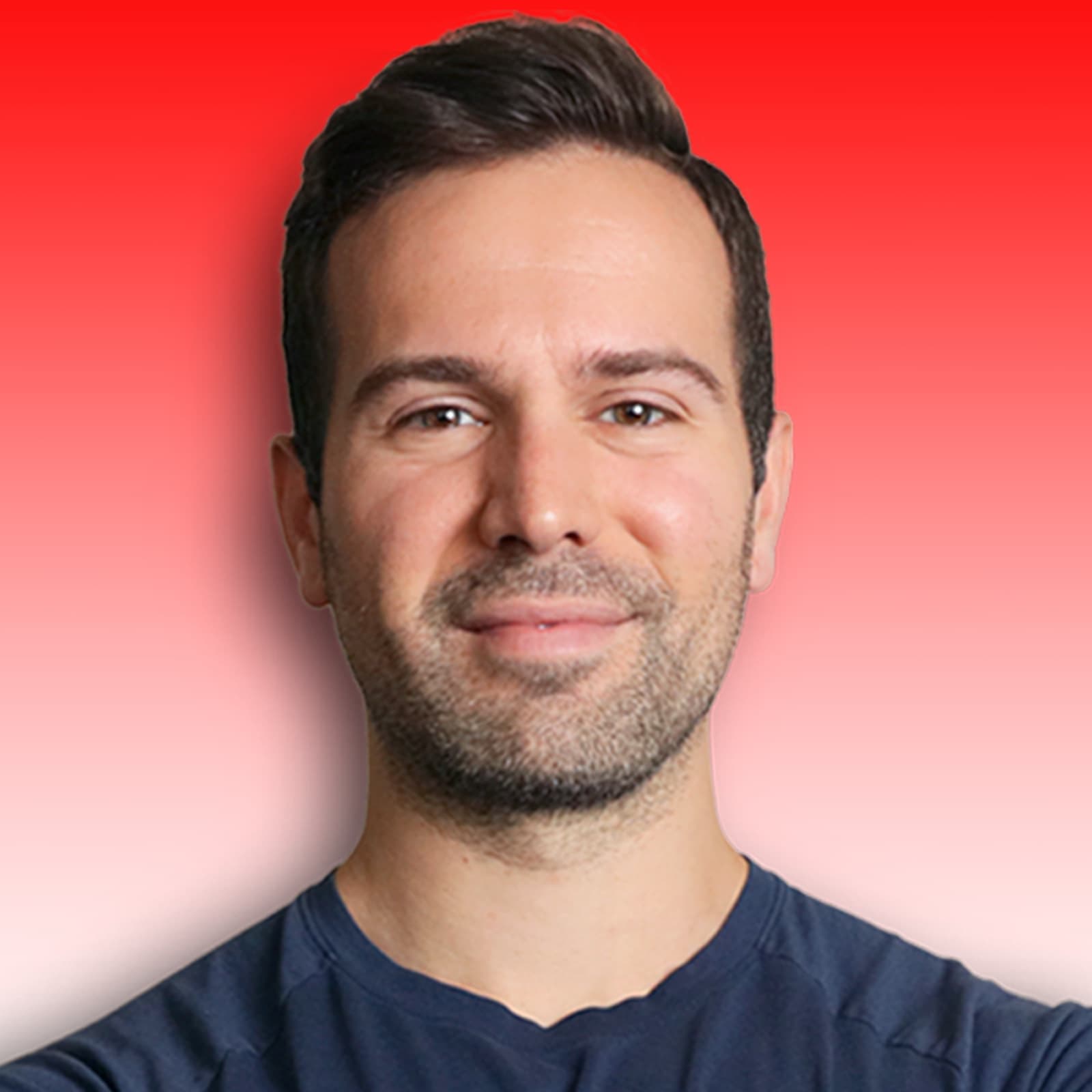It’s no secret how confusing and overwhelming starting a diet can be. I’ve been there.
Between the current fad diets and the most recent diet, your friend brags about, making the right choice can feel almost debilitating.
If you want a “diet” that’s easy to follow, backed by science, and doesn’t require removing your favorite foods, then a flexible dieting approach might be for you.
This post breaks down the benefits of this dieting approach and shows you how to get started in a few easy steps.
The Benefits of Flexible Dieting
Several benefits are widely known when it comes to this form of dieting. Below are a few of (what I believe) the more notable benefits of a flexible dieting approach regarding nutrition.
Easy to Follow
It’s not a magic formula. It’s based on actual science. Your macronutrient profile is based on various internal/external factors unique to you. (ex: resting metabolic rate, daily energy expenditure, training experience, current goals)
The core focus of this approach is on understanding proper energy balance regarding the major macronutrients – protein, carbohydrates, fat, and fiber.
Implementing this flexible dieting approach is a matter of learning your daily energy balance requirements based on your goals.
Once you know your macronutrient profile, you can focus on maintaining that net weekly average (whether your goal is a caloric deficit, surplus, or maintenance).
This may seem like an oversimplified explanation, but people tend to make things harder unnecessarily.
Enjoy Your Favorite Foods
This approach made it incredibly easy for me to adhere to a nutrition plan without feeling restricted in the types of foods I could enjoy.
Since it focuses on your overall macronutrient balance vs. just simply counting calories or only eating certain foods (ex: keto or paleo diet), it just felt easier.
Let me be clear when I say you can enjoy your favorite “no-no junk” foods; this approach allows you to do so while still obtaining your desired health/fitness goal.
However, I still preach to enjoy those foods in moderation, which I’ll address later in this post.
Three Steps to Easily Start Flexible Dieting
One of the first steps is determining if this dieting aligns with your lifestyle.
It’s not for everyone, and that’s okay, especially since this isn’t a quick fix. So an easy way to find out is to try it, so I suggest tracking your food intake for one month as a baseline test.
1. Track Your Food Intake for 1-Week
There are many ways to track your food, but using a tracking application makes the process 10x simpler and faster.
MyFitnessPal is one of the better known & widely used apps for this – I also created a super short & easy-follow tutorial for best practices when using the MFP app, and you can read that here.
2. Choose a Goal & Discover Your Macronutrient Profile
To determine your ideal macro profile, we can use a simple calculator that gathers some key information from you. IIFYM.com provides a free calculator that is incredibly easy to use and spits out your desired macro profile.
- Click the link here to use this free macro calculator
- Fill in your information & desired goals
- Save the results of the macronutrient profile is provides
If you want help with this process, click the link below and watch my free video, where I show you how to implement a 3-day tracking challenge.
This process is important in determining the correct energy balance for your current fitness goals (ex: fat/weight loss, building muscle, or maintaining your current weight).
Once you’ve done that, you can use the aforementioned macronutrient calculator to determine your ideal macro profile as a starting point.
3. Start Practicing Flexible Dieting
Once you have tracked your food and calculated your goal macro profile, we can compare where you currently are to where you’d like to be based on your personal goals (lose fat, build muscle, or maintain).
To compare your results, first, you need to enter your new macronutrient goal profile into MyFitnessPal.
- Click on the button labeled [More]
- Click on [Goals]
- Click on [Calorie, Carbs, Protein, and Fat Goals]
- First, enter your total caloric intake number
- Second, enter your protein, carb, and fat macros
This should be a starting line for you to see where you are and what types of food you’re eating and shine a light on your normal energy balance consumption.
Why is it important to compare your current tracking results to your goal macronutrient profile?
Once you understand where you’re currently at, it becomes much simpler to put a plan into action to get where you’d like to be.
I often preach that part of this process is continuing to educate yourself. Instead of trying to do it all or learn it all at once, I encourage you to be patient with yourself as you learn.
This is a learning process, and if you’re here reading this, then I’m going to assume you want to learn. You want to regain control of your mind, body, and health.
Frequently Asked Questions About Flexible Dieting
These are a few common questions that inevitably get asked by individuals who are new or skeptical about IIFYM or flexible dieting.
How is Flexible Dieting Different Than Calorie Counting
There is a distinct difference between counting calories versus tracking your macros (aka flexible dieting).
The difference is in people’s perception of these two forms of dieting. When you think of counting calories, you most likely think about tracking every calorie you eat and staying within a certain range based on your goal.
Simple enough.
Flexible Dieting, or IIFYM, doesn’t ignore calories in the calculations. In fact, it’s part of your complete macronutrient profile – your total caloric intake.
However, this dieting approach focuses on a healthy balance of macronutrients instead of only focusing on calories.
The image above shows two different macronutrient profiles with the same total caloric intake but very different carb, protein, and fat breakdowns.
Everyone is different, and you may prefer to eat more carbs during the day than another person who prefers to eat more fat.
An important piece to remember is not to get hung up just on your total calories or even the macros themselves but to aim to get a balance of nutrient-dense foods.
This will give you a better chance of reaching the health & fitness goal you may set for yourself while helping you reach optimal health & performance.
Focusing on your energy balance in the context of your goals is the key.
Is IIFYM / Flexible Dieting a Healthy Diet?
I’ve often heard a statement from friends and clients: “So this is a justifiable way to eat whatever I want, as long as it falls within my macronutrient profile?” My short answer to that is- yes and no.
Yes, you naturally have built-in flexibility with this form of diet restriction because you don’t have to demonize food or altogether remove certain foods from your diet.
You can incorporate them as you like. Enjoying these “no-no” foods in moderation has been shown to help increase adherence in the long run.
By incorporating foods you like in moderation, it’s less likely you’ll have severe food cravings, which can lead to overeating, thus ruining your dieting attempts.
No, you shouldn’t just aim to eat junk food all the time, either.
- We tend to perform poorly and feel crappier when eating food that isn’t as nutrient-dense
- Most junk food doesn’t provide the adequate nutrient density we need to sustain exercise performance, muscular growth, or optimal health.
Bottom line- this “dieting” can be healthy, especially due to the psychological benefits of an improved relationship with food.
You can enjoy most foods in moderation and still be healthy on a biological level while also reaching your optimal health/fitness goals.
Final Thoughts
Misinformation is abundant on the internet regarding nutrition; it can be frustrating and difficult to know who to believe and where you should start.
I suggest giving flexible dieting a chance if you haven’t before and deciding for yourself if it matches your lifestyle and goals.
In the end, I’m not a doctor or a registered dietician, and when it comes to your health, I don’t joke around.
So before doing any diet, it can be prudent to do baseline testing with your physician to see how your health is on a physiological and metabolic level.




